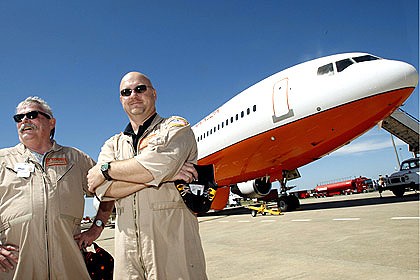From the Yakima Herald:
==================
YAKIMA, Wash. — Months after a controlled burn that sent thick smoke into the Yakima Valley, a local environmental agency has fined the U.S. Forest Service a maximum penalty of $12,000 for violating the Washington Clean Air Act.
Officials at the Yakima Regional Clean Air Agency said the Naches Ranger District failed to provide details about how it will assure that future burns don’t compromise air quality. In late October, the Forest Service was told that its Sept. 28 burn in the Bethel Ridge area had posed health risks to Yakima County residents.
This is the first time the regional environmental agency has imposed a fine on the Forest Service, or issued the maximum financial penalty for a single violation of the state’s clean air law.
“We want people to understand we’re trying to do something,” said Dave Caprile, spokesman for the clean air agency, which monitors air quality in Yakima County. “We are going to treat the Forest Service as we would any other individual.”
Forest officials say they don’t believe Yakima Regional Clean Air Agency even has the authority to regulate smoke from burns on Forest Service land.
Naches District officials have said the Bethel Ridge burn met state smoke management requirements and that they received day-of approval from the state Department of Natural Resources.
The 2,000-acre burn was intended to reduce the danger of a catastrophic wildfire by reducing downed tree limbs, bushes and other debris that have built up after decades of fire suppression.
Forest authorities have said an unexpected wind shift late in the afternoon — after the controlled burn had begun — sent smoke toward Yakima for more than five hours.
At least 17 residents from Tieton, Selah and Yakima complained to the Clean Air Agency about eye irritation, scratchy throats and aggravated asthma after the Sept. 28 burn.
“The smoke intrusion … was a very unfortunate event that none of the experts we consulted at DNR or National Weather Service predicted,” District Ranger Randall Shepard wrote to the Clean Air Agency last month in a letter obtained through a public records request.
“We acted in good faith within the authorization granted us and thus can only conclude that our actions that day were appropriate and responsible.”
While he has said that the Forest Service will now notify the clean air agency before future burns, he doesn’t recognize it as a regulatory authority.
“The short answer is we feel like we’ve gone through the proper authorities and that’s the Department of Natural Resources,” Shepard told the Herald-Republic on Tuesday. “We’re consulting with our legal counsel to see where we go next.”
The Forest Service has until early January to pay the fine or appeal.



